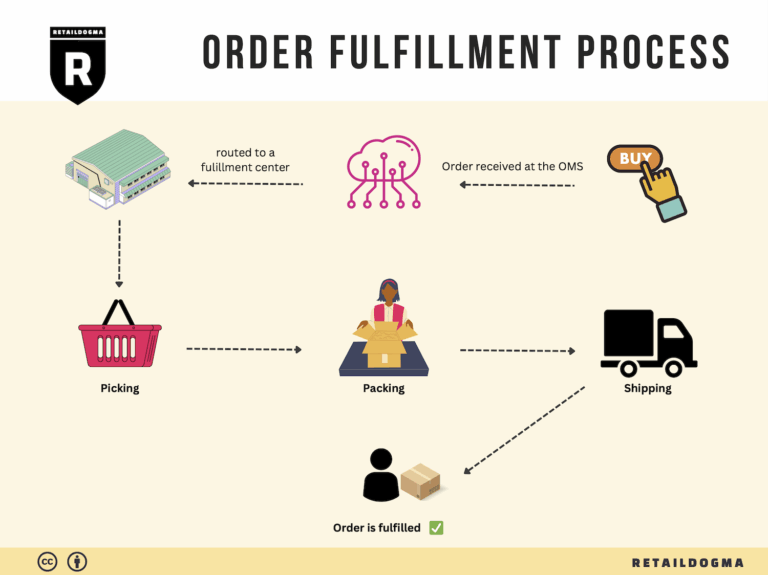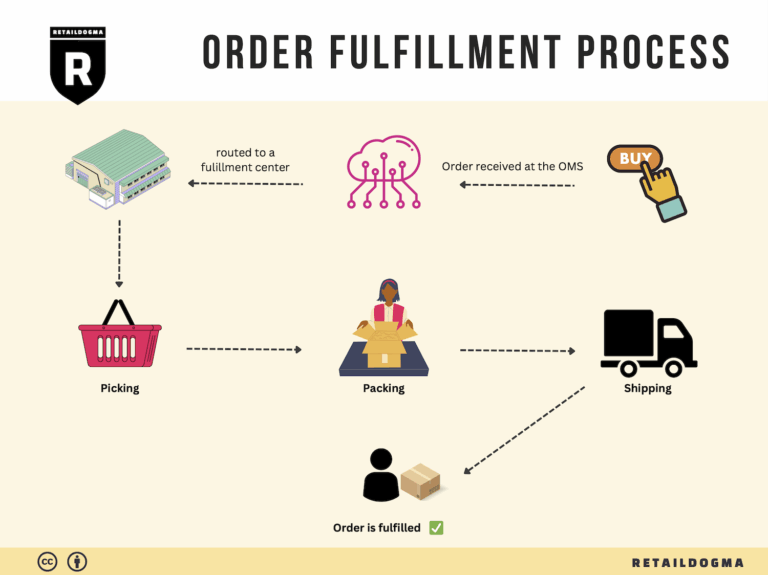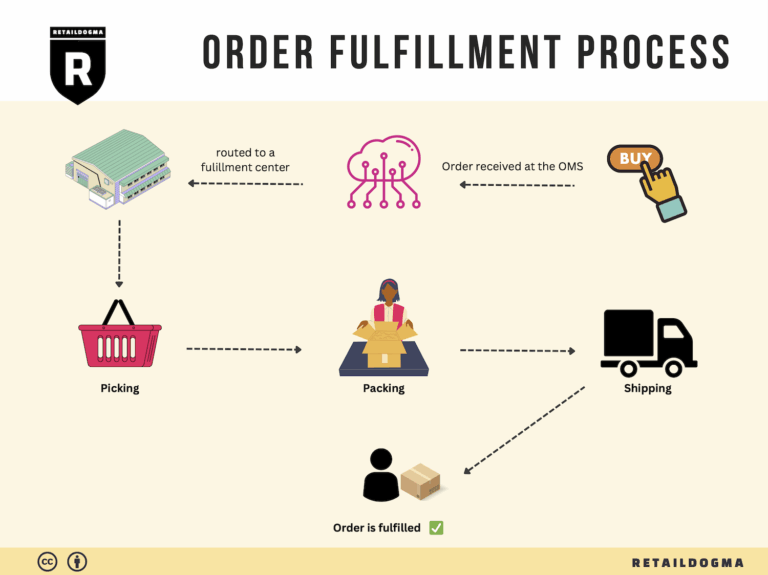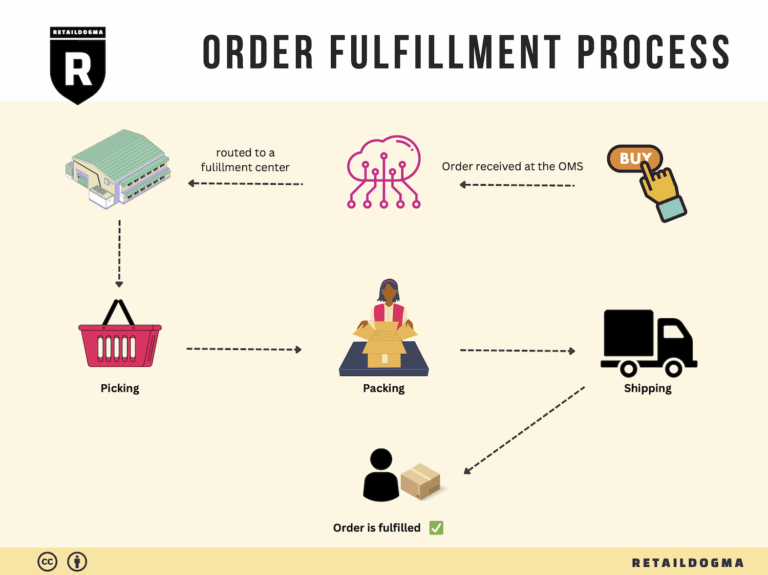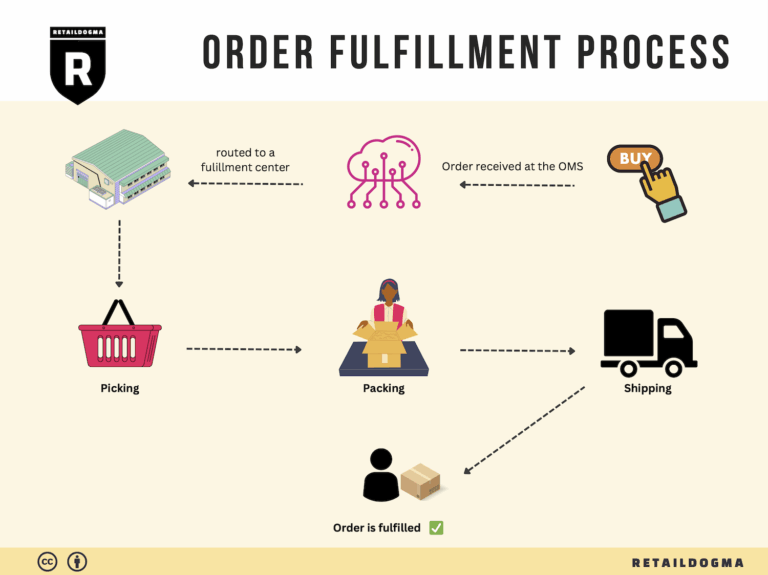How Order Fulfillment Works: A Step-by-Step Guide for Businesses
What is E-commerce Fulfillment? An Introduction for Growing Businesses
Understanding E-commerce Fulfillment: A Key to Scaling Your Business
As an e-commerce business owner, one of the most significant challenges you may face is managing the logistics of packing and shipping orders. The excitement of growing sales can quickly turn into overwhelming stress when orders pile up, and your limited resources are stretched thin. This is where e-commerce fulfillment comes into play—a vital process that ensures your products reach customers efficiently and effectively.
E-commerce fulfillment is the series of steps involved in getting a product from your warehouse or inventory to the customer’s doorstep. This includes inventory management, order processing, packing, shipping, and handling returns. For many businesses, especially those looking to scale, understanding and optimizing this process can be the difference between success and stagnation.
In this guide, we will explore various fulfillment models that can cater to your business needs. One popular option is Fulfillment by Amazon (FBA), where Amazon handles storage, packing, and shipping, allowing you to focus on growing your brand. Alternatively, Third-Party Logistics (3PL) providers offer a more customizable approach, giving you control over how your products are stored and shipped.
We will also delve into the core services offered by fulfillment partners, such as inventory storage, order tracking, and customer service. Knowing what to expect from your fulfillment partner can help you establish a seamless flow of operations that enhances customer satisfaction.
Choosing the right fulfillment partner is crucial for your business. Factors such as reliability, technology integration, and scalability should guide your decision-making process. We will provide actionable insights on how to evaluate potential partners to ensure they align with your business goals.
Lastly, pricing is a key consideration in any fulfillment strategy. We’ll break down typical costs associated with fulfillment services, helping you understand how to budget effectively while maximizing your margins.
The goal of this guide is to empower you with the knowledge and tools necessary to make informed decisions about your logistics strategy. By understanding the nuances of e-commerce fulfillment, you can streamline operations, improve customer satisfaction, and ultimately scale your business with confidence.
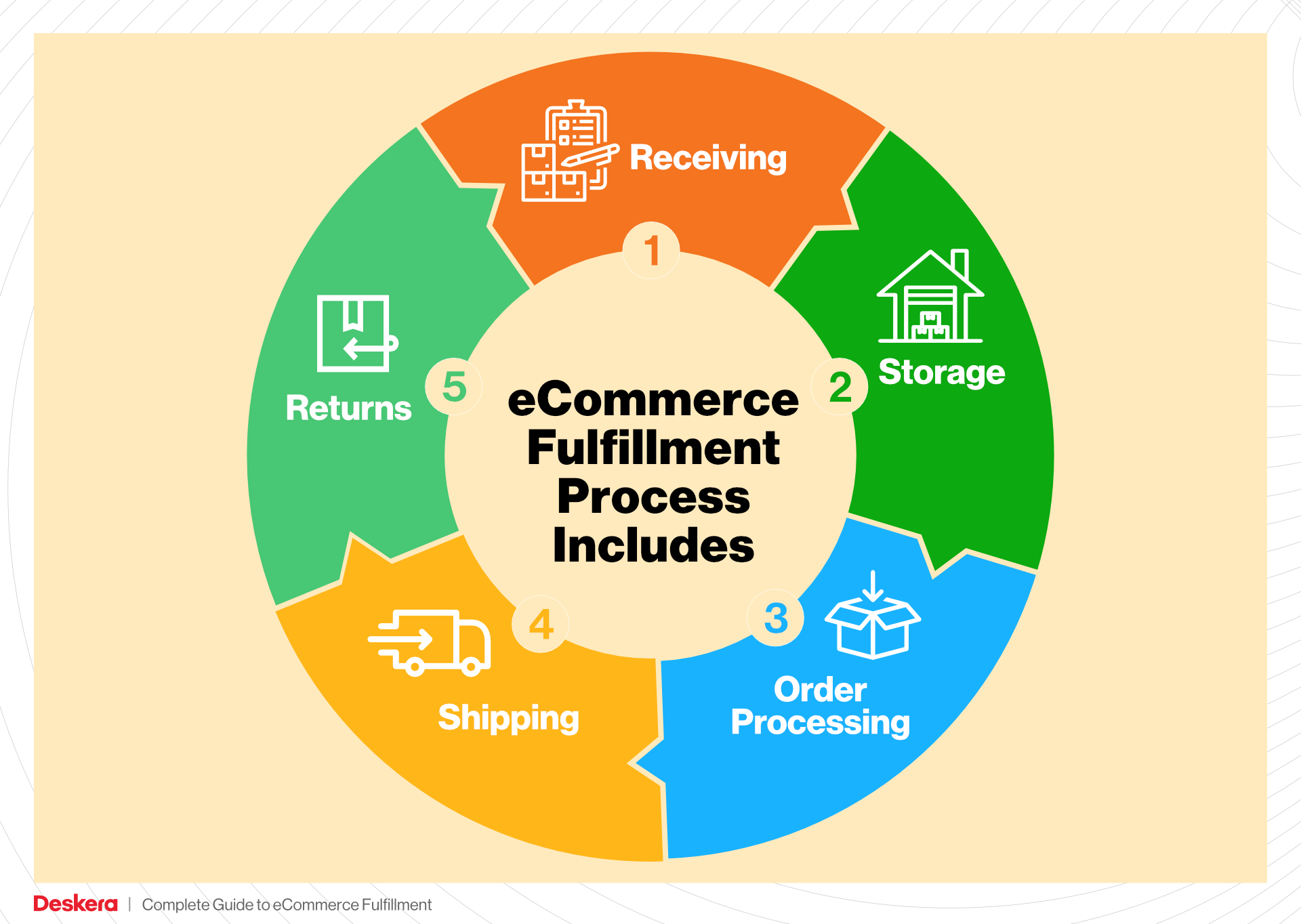
What You’ll Learn In This Guide
- What is E-commerce Fulfillment? An Introduction for Growing Businesses
- The Order Fulfillment Process: From ‘Buy’ Button to Customer’s Door
- Comparing Fulfillment Models: In-House vs. 3PL vs. Dropshipping
- A Deep Dive into Amazon FBA: Pros, Cons, and Who It’s For
- Core Services Offered by Fulfillment Centers
- How to Choose a Fulfillment Partner: A 6-Point Checklist
- Understanding Fulfillment Pricing: A Breakdown of Common Fees
- Frequently Asked Questions (FAQs) about Fulfillment
- Conclusion: Is Outsourcing Fulfillment the Right Move for Your Business?
- Important Disclaimer
The Order Fulfillment Process: From ‘Buy’ Button to Customer’s Door
1. Receiving Inventory
The order fulfillment process begins with receiving inventory, a critical step that sets the foundation for smooth operations. When products arrive at the fulfillment center, they are unloaded and inspected for quality and quantity. This step is essential to ensure that the right products are available for future orders. Each product is assigned a unique SKU (Stock Keeping Unit), which serves as an identifier that helps track inventory levels and manage stock efficiently.
Effective inventory management at this stage allows businesses to maintain accurate stock counts, reducing the risk of overselling or stockouts. It is crucial for e-commerce business owners to develop a standardized receiving process, including checking shipments against purchase orders and documenting any discrepancies. This diligence minimizes errors and ensures that the inventory is ready for the next stages of fulfillment.
2. Warehouse Storage
Once the inventory is received and accounted for, the next step is warehouse storage. This involves organizing the products in a way that maximizes space and facilitates easy access. Items are typically stored based on various factors, including size, demand frequency, and category. The layout of the warehouse can significantly impact efficiency; for instance, fast-moving items should be placed closer to the packing area.
Using a warehouse management system (WMS) can streamline this process by automating storage location assignments and providing real-time inventory updates. This technology allows businesses to optimize storage, reduce picking times, and enhance overall operational efficiency. Proper warehouse storage strategies not only increase productivity but also contribute to faster order fulfillment, which is a key driver of customer satisfaction.
3. Order Picking
The next phase in the fulfillment process is order picking, where items are gathered to fulfill customer orders. This step is crucial as it directly influences order accuracy and speed. When an order is placed, a pick list is generated, detailing the items needed for the order along with their respective locations in the warehouse.
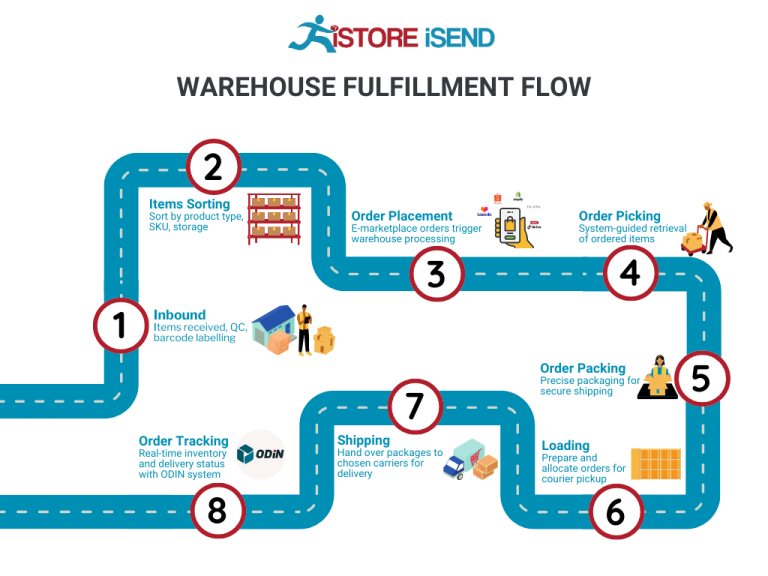
There are several picking methods, including single order picking, batch picking, and wave picking, each suited for different types of operations. Efficient order picking minimizes time spent retrieving products, which is vital for maintaining quick turnaround times. Implementing technology, such as barcode scanners or RFID systems, can enhance accuracy during this stage, ensuring that the correct items are picked and reducing the likelihood of errors.
4. Order Packing
After the items are picked, they move to the order packing stage. Here, products are carefully packed to ensure they arrive at the customer’s door in perfect condition. This involves selecting appropriate packaging materials, labeling packages, and preparing shipping documentation. Proper packing is essential not only for protecting items during transit but also for optimizing shipping costs.
Businesses should consider using packing lists to ensure all items are included before sealing the package. Additionally, investing in automated packing systems can streamline this process, reduce labor costs, and increase packing speed. An efficient packing process contributes to a positive customer experience, as well-packaged products lead to fewer returns and greater customer satisfaction.
5. Shipping & Delivery
The final step in the order fulfillment process is shipping and delivery, where packages are dispatched to customers. This step encompasses selecting the best shipping carriers, determining shipping methods, and scheduling pickups. Fast and reliable shipping options are critical for e-commerce businesses, as they directly affect customer satisfaction and repeat business.
To enhance shipping efficiency, businesses should leverage shipping management software that can compare rates from multiple carriers, automate label printing, and track shipments in real-time. Providing customers with tracking information enhances their experience, allowing them to monitor their orders from dispatch to delivery. Timely delivery not only fulfills customer expectations but also reinforces brand reliability and encourages future purchases.
By understanding and optimizing each step of the order fulfillment process, e-commerce businesses can scale their operations effectively, improve customer satisfaction, and ultimately drive sales growth.
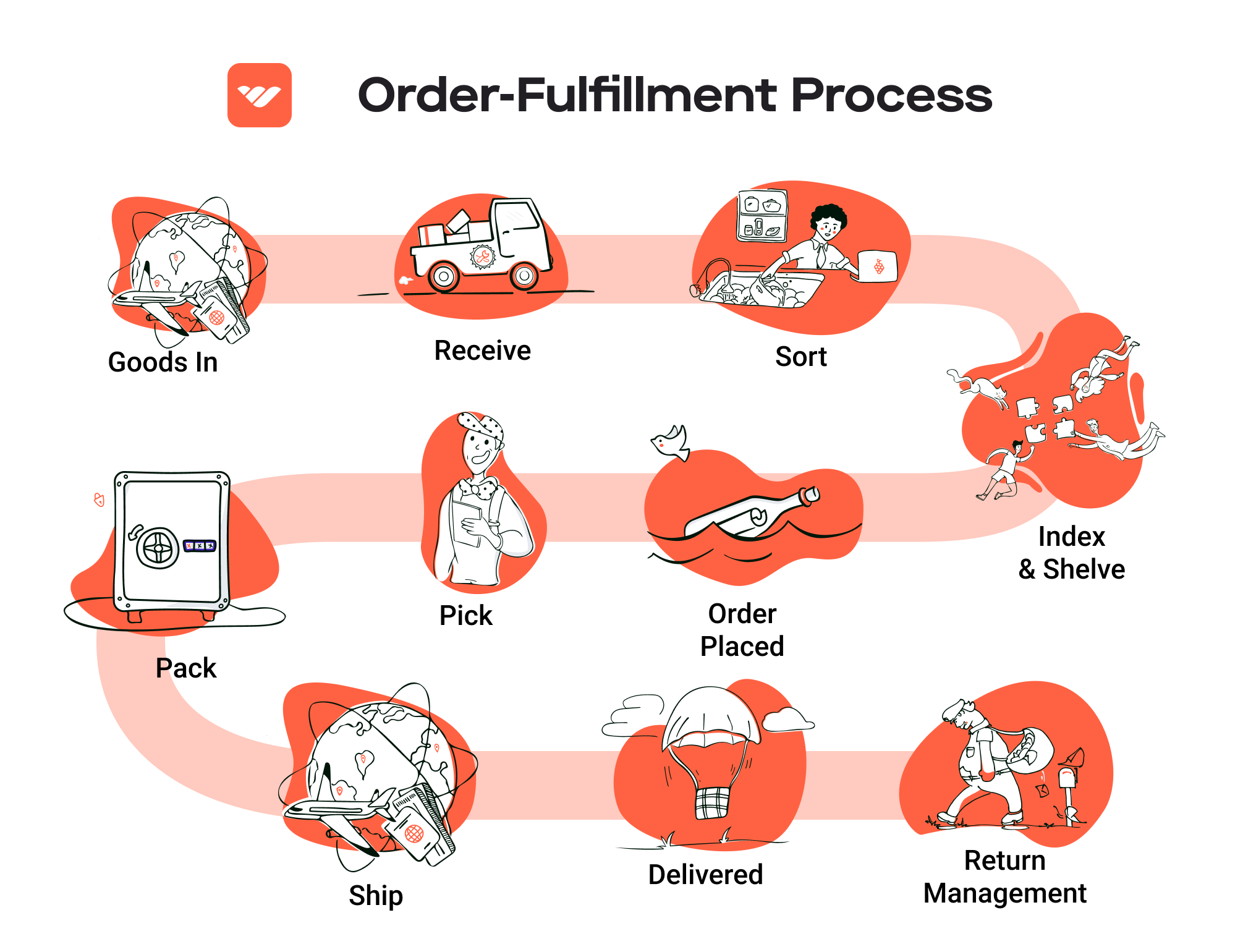
Comparing Fulfillment Models: In-House vs. 3PL vs. Dropshipping
Fulfillment Model Comparison
| Model | Who Handles Inventory | Best For (Business Stage) | Key Advantage | Key Disadvantage |
|---|---|---|---|---|
| In-House Fulfillment | The business itself | Established businesses with stable demand | Complete control over inventory and fulfillment processes | High overhead costs and resource-intensive |
| Third-Party Logistics (3PL) | A third-party provider | Growing businesses looking to scale quickly | Cost-effective and scalable logistics solutions | Less control over inventory and fulfillment |
| Dropshipping | Supplier or manufacturer | Startups and small businesses with limited capital | Low upfront investment and no inventory risk | Lower profit margins and potential shipping delays |
In-House Fulfillment
In-house fulfillment involves managing the entire supply chain process within your own business. This means that you handle everything from warehousing to picking, packing, and shipping products directly to customers. This model is often favored by established businesses that have a stable demand for their products. The key advantage of in-house fulfillment is the complete control it provides over inventory management and fulfillment processes. Businesses can ensure quality control, streamline operations, and tailor the fulfillment experience to their brand’s specific needs. However, this model comes with significant drawbacks, particularly in terms of overhead costs. Warehousing, staffing, and technology investments can be substantial, making it a resource-intensive option that may not be sustainable for smaller businesses or those with fluctuating demand.
Third-Party Logistics (3PL)
Third-party logistics (3PL) refers to outsourcing the logistics and fulfillment processes to an external provider. This model is particularly appealing for growing businesses that need to scale quickly without the burden of managing logistics in-house. A 3PL provider handles inventory storage, order fulfillment, shipping, and sometimes even returns management. The key advantage of this model is its cost-effectiveness; businesses can benefit from the expertise and infrastructure of established logistics providers without significant capital investments. Additionally, 3PLs often have access to advanced technology and streamlined processes that can enhance operational efficiency. However, one of the main disadvantages is the reduced control over inventory and fulfillment processes. Businesses may face challenges in communication and coordination with the 3PL, which can lead to inconsistencies in service quality and customer experience.
Dropshipping
Dropshipping is a fulfillment model where the retailer does not keep products in stock but instead relies on suppliers or manufacturers to fulfill customer orders directly. This model is ideal for startups and small businesses with limited capital, as it requires little upfront investment and eliminates the need for inventory management. The key advantage of dropshipping is the minimal financial risk involved; businesses only pay for products once they are sold, which significantly lowers overhead costs. Additionally, entrepreneurs can offer a wide range of products without the constraints of warehousing space. However, dropshipping also has notable disadvantages, including lower profit margins due to reliance on suppliers and the potential for shipping delays. Moreover, businesses may struggle with quality control and customer service issues, as they are not directly involved in the fulfillment process. This model requires careful selection of reliable suppliers and proactive management to ensure a positive customer experience.
Conclusion
Choosing the right fulfillment model is crucial for scaling your e-commerce business effectively. Each model—In-House Fulfillment, Third-Party Logistics, and Dropshipping—offers unique advantages and challenges. Established businesses may find in-house fulfillment to be the most beneficial for maintaining control and quality, while growing companies may prefer the scalability of 3PL solutions. Meanwhile, startups can leverage dropshipping to enter the market with minimal risk. Ultimately, the decision should align with your business goals, operational capacity, and customer service expectations.
A Deep Dive into Amazon FBA: Pros, Cons, and Who It’s For
Understanding Fulfillment by Amazon (FBA)
Fulfillment by Amazon (FBA) is a service offered by Amazon that enables sellers to store their products in Amazon’s fulfillment centers. Amazon takes care of storage, packaging, shipping, and customer service for these products, allowing sellers to focus on other aspects of their business. This service is particularly advantageous for e-commerce entrepreneurs looking to scale their operations without the overhead of managing their own logistics.
How FBA Works
-
Setting Up Your FBA Account: Sellers need to create an Amazon Seller account and choose FBA as their fulfillment method. They then list their products on Amazon and specify that they will be fulfilled by Amazon.
-
Shipping Inventory to Amazon: Sellers prepare their products according to Amazon’s guidelines and ship them to one or more of Amazon’s fulfillment centers. Amazon provides shipping labels and guidance on how to pack items.
-
Storage and Management: Once products arrive at the fulfillment center, Amazon takes responsibility for inventory management. This includes tracking inventory levels and ensuring that products are stored in a way that maximizes efficiency.
-
Order Fulfillment: When a customer orders a product, Amazon picks, packs, and ships the item on behalf of the seller. Customers benefit from Amazon’s fast shipping options, including same-day and two-day delivery for Prime members.
-
Customer Service and Returns: Amazon also handles customer inquiries and returns for FBA products, providing a seamless experience for both sellers and customers.
Pros of FBA
1. Prime Eligibility
One of the most significant advantages of using FBA is that products become eligible for Amazon Prime. This increases visibility and attractiveness to millions of Prime members who prefer faster shipping options. Prime eligibility can lead to higher sales and improved conversion rates.
2. Customer Trust
Products fulfilled by Amazon benefit from the trust and credibility associated with the Amazon brand. Customers often feel more secure purchasing items that are backed by Amazon’s logistics, customer service, and return policies. This can significantly enhance the overall customer experience and drive repeat business.
3. Multi-Channel Fulfillment
FBA isn’t limited to sales on Amazon’s platform. Sellers can utilize FBA for orders from their own websites or other sales channels, allowing them to leverage Amazon’s logistics capabilities across multiple platforms. This can streamline operations and create efficiencies in order fulfillment.
4. Time and Resource Efficiency
Outsourcing logistics to Amazon allows sellers to save time and resources that would otherwise be spent on warehousing, packing, shipping, and customer service. This enables sellers to focus on product development, marketing, and growing their business.
5. Scalability
FBA provides a scalable solution for businesses of all sizes. As a business grows, sellers can easily increase their inventory and leverage Amazon’s robust fulfillment network to meet demand without needing to invest in additional infrastructure.
Cons of FBA
1. High Fees
While FBA can simplify logistics, it comes at a cost. Amazon charges various fees, including storage fees for inventory and fulfillment fees for each order processed. These costs can add up, particularly for sellers with lower-margin products.
2. Strict Inventory Rules
Amazon has specific requirements for inventory management, including guidelines on packaging, labeling, and storage. Sellers must adhere to these rules, or they risk incurring additional fees or having their products rejected upon arrival at the fulfillment center.
3. Commingling Risks
FBA products may be commingled with those from other sellers, meaning that the same SKU can come from different sources. This can pose risks for sellers, particularly in terms of quality control and returns. If a customer receives a defective item, they may associate the issue with your brand, even if it originated from another seller’s inventory.
4. Limited Control Over Fulfillment
By relying on Amazon for fulfillment, sellers relinquish some control over the customer experience. This includes aspects like packaging, shipping times, and customer service interactions. For brands that prioritize a unique customer experience, this can be a downside.
5. Inventory Management Challenges
Managing inventory levels can be tricky with FBA, especially during peak seasons. Sellers must forecast demand accurately to avoid running out of stock or incurring high storage fees for excess inventory. Poor inventory management can lead to lost sales or increased costs.
Who is FBA Best For?
Fulfillment by Amazon is particularly well-suited for:
-
Small to Medium-Sized Businesses: Entrepreneurs looking to scale without heavy investments in logistics can benefit significantly from FBA.
-
Retailers with High Sales Volume: Businesses that already have a steady sales volume can leverage FBA to streamline operations and enhance customer satisfaction.
-
Sellers with Unique or High-Demand Products: Those with products that have a high demand can take advantage of FBA’s fast shipping options to maximize sales.
-
Multi-Channel Sellers: Businesses selling across various platforms can utilize FBA to manage logistics efficiently while maintaining consistent service levels.
-
New Entrants to E-Commerce: Startups and new sellers can benefit from the credibility and reach of Amazon while minimizing initial operational burdens.
In conclusion, while Fulfillment by Amazon offers a host of advantages for scaling e-commerce businesses, it is essential for sellers to weigh these benefits against potential downsides. By understanding how FBA works and aligning it with their business goals, sellers can make informed decisions that enhance their operational efficiency and customer satisfaction.
Core Services Offered by Fulfillment Centers
Inventory Management & Warehousing
Fulfillment centers provide essential inventory management and warehousing services, which are critical for e-commerce businesses aiming to streamline operations and reduce costs. These facilities utilize sophisticated inventory management systems that enable real-time tracking of stock levels, allowing businesses to maintain optimal inventory without overstocking or running out of products.
Benefits:
1. Space Optimization: Fulfillment centers offer significant storage space, allowing businesses to scale operations without the burden of investing in their own warehousing. This is particularly advantageous for e-commerce businesses that experience fluctuating demand.
2. Cost Efficiency: By outsourcing warehousing, businesses can save on overhead costs associated with maintaining their own storage facilities, such as rent, utilities, and staffing.
3. Inventory Accuracy: Advanced inventory management systems reduce the likelihood of errors in stock levels, ensuring that businesses have accurate information to make purchasing decisions. This helps in preventing stockouts or excess inventory, which can tie up capital.
Pick and Pack Services
Pick and pack services are at the core of fulfillment operations. This process involves selecting items from the warehouse (picking) and preparing them for shipment (packing). Fulfillment centers employ a variety of methods, including automated systems and trained personnel, to efficiently handle this process.
Benefits:
1. Speed and Efficiency: Fulfillment centers leverage technology and optimized workflows to minimize the time it takes to fulfill orders. This efficiency translates into faster shipping times, which is crucial for maintaining customer satisfaction in the competitive e-commerce landscape.
2. Accuracy: Professional pick and pack services reduce the risk of errors during order fulfillment. Accurate order processing leads to fewer returns and exchanges, enhancing the overall customer experience.
3. Scalability: As e-commerce businesses grow, their order volumes can fluctuate dramatically. Fulfillment centers can scale their pick and pack operations quickly to accommodate increased demand, ensuring that businesses can meet customer expectations without delay.
Kitting and Assembly
Kitting and assembly services involve the grouping of multiple products into a single package or kit, which can be especially useful for businesses that sell bundled products or need to prepare items for promotional campaigns. Fulfillment centers often offer this service to streamline the order fulfillment process.
Benefits:
1. Customization: Kitting allows businesses to create customized packages that meet specific customer needs or preferences. This can enhance product appeal and increase sales, especially for special promotions or holiday seasons.
2. Reduced Handling Time: By assembling kits at the fulfillment center, businesses can reduce the handling time associated with preparing individual items for shipment. This efficiency helps in speeding up the overall fulfillment process.
3. Inventory Management: Kitting can also simplify inventory management, as businesses can track kits as single units rather than individual components. This can lead to improved stock control and forecasting.
Returns Management (Reverse Logistics)
Returns management, or reverse logistics, is a critical service offered by fulfillment centers, especially in the e-commerce sector where return rates can be high. Efficiently handling returns is essential for maintaining customer satisfaction and managing inventory effectively.
Benefits:
1. Streamlined Process: Fulfillment centers provide a structured process for handling returns, including inspections, restocking, and processing refunds or exchanges. This ensures that returns are managed quickly and efficiently, minimizing the impact on cash flow.
2. Customer Satisfaction: A smooth returns process can enhance customer satisfaction and loyalty. Customers are more likely to shop with a brand that offers hassle-free returns, which can lead to repeat business and positive word-of-mouth referrals.
3. Data Insights: Returns management provides valuable data regarding product performance and customer preferences. By analyzing return reasons, businesses can make informed decisions about product quality, inventory management, and marketing strategies.
In conclusion, leveraging the core services offered by fulfillment centers—inventory management and warehousing, pick and pack services, kitting and assembly, and returns management—can significantly enhance the operational efficiency of e-commerce businesses. By outsourcing these functions, businesses can focus on growth and customer engagement while ensuring that their logistics and supply chain are optimized for success.
How to Choose a Fulfillment Partner: A 6-Point Checklist
Location & Warehouse Network
Choosing a fulfillment partner with a strategically located warehouse network is crucial for optimizing shipping times and costs. The proximity of warehouses to your customer base can significantly influence delivery speed and customer satisfaction.
Questions to Ask:
– What is the geographic coverage of your warehouses?
– How many fulfillment centers do you operate, and where are they located?
– Can you provide estimated shipping times to my key markets?
Understanding the fulfillment partner’s location allows you to assess their ability to provide timely delivery, which is essential for maintaining customer satisfaction and loyalty.
Technology & Integrations
In today’s digital landscape, technology plays a critical role in efficient order processing, inventory management, and communication. A proficient fulfillment partner should offer advanced technology solutions that integrate seamlessly with your e-commerce platform.
Questions to Ask:
– What inventory management system do you use, and can it integrate with my e-commerce platform?
– Do you offer real-time tracking for orders?
– How do you handle inventory updates, and how frequently are they communicated?
A partner equipped with the latest technology can provide you with better visibility into your inventory and order status, which helps in making informed decisions and enhancing customer experience.
Specializations (e.g., Cold Storage, Oversized Items)
Different businesses have unique requirements, and not all fulfillment partners are equipped to handle specialized products. If you deal with perishable goods, hazardous materials, or oversized items, selecting a partner with the right capabilities is critical.
Questions to Ask:
– Do you have experience handling my specific product types?
– What specialized services do you offer (e.g., temperature-controlled storage, fragile item handling)?
– Can you provide references from clients with similar product needs?
Understanding the fulfillment partner’s specialization ensures that they can meet your specific operational needs, thus reducing the risk of damages and ensuring compliance with industry regulations.
Scalability & Capacity
As your business grows, your fulfillment needs will change. It’s essential to choose a partner that can scale operations according to your growth trajectory without sacrificing service quality.
Questions to Ask:
– How do you handle peak seasons or unexpected surges in order volume?
– What is your current capacity, and how do you plan to expand in the future?
– Are there any limitations on the types or volumes of products you can handle?
A partner that can scale effectively will save you from the complications of switching providers mid-growth, ensuring continuity in service and customer satisfaction.
Pricing and Contracts
Understanding the pricing structure and contract terms is fundamental to maintaining a healthy bottom line. A transparent pricing model helps you budget effectively and avoid unexpected costs.
Questions to Ask:
– What are your fees, and how are they structured (e.g., per order, per item, storage fees)?
– Are there any hidden fees I should be aware of?
– What is the length of your contracts, and what are the terms for termination?
By clarifying these aspects, you can ensure that your fulfillment partner aligns with your financial goals and provides value for the services rendered.
Customer Support & Reviews
Reliable customer support is vital for resolving issues quickly and maintaining operational efficiency. Additionally, reviews from other businesses can provide insights into the partner’s reliability and service quality.
Questions to Ask:
– What support channels do you offer (e.g., phone, email, live chat)?
– What are your average response and resolution times?
– Can you provide testimonials or case studies from current or former clients?
Effective customer support can make a significant difference in your day-to-day operations, ensuring that any issues are addressed swiftly and maintaining a positive working relationship.
Conclusion
Choosing the right fulfillment partner is a strategic decision that can significantly impact your e-commerce business’s success. By following this checklist and asking the right questions, you can make an informed choice that aligns with your operational needs and growth ambitions. Remember, a well-selected fulfillment partner not only enhances your logistics capabilities but also contributes to an overall improved customer experience, paving the way for sustainable growth.
Understanding Fulfillment Pricing: A Breakdown of Common Fees
Initial Setup Fees
When partnering with a fulfillment center, businesses often encounter initial setup fees. These fees cover the costs associated with onboarding your business into the fulfillment system. This can include creating your account, integrating your e-commerce platform with the fulfillment center’s system, and configuring the necessary logistics processes.
The calculation of initial setup fees can vary significantly based on the complexity of your operations. For instance, if you have a straightforward product line with minimal customization, your setup fees may be relatively low. However, if your business requires complex integrations or specialized handling of products (like fragile items or those requiring temperature control), expect higher fees.
Receiving Fees
Receiving fees are charged when the fulfillment center takes delivery of your inventory. These fees compensate the facility for unloading, inspecting, and entering your products into their system.
Typically, receiving fees are calculated on a per shipment basis or per pallet. For example, a fulfillment center may charge a flat rate for each shipment received or a fee based on the number of pallets. If your business frequently ships large quantities, understanding how these fees scale with volume can help you manage costs effectively.
Storage Fees (per pallet/bin)
Storage fees are incurred for the time your inventory spends in the fulfillment center. These fees are generally calculated on a per pallet or per bin basis, depending on how your products are stored.
Most fulfillment centers charge monthly storage fees, which can range from a few dollars to more significant amounts based on the volume and type of products stored. Seasonal fluctuations in inventory levels can also impact storage costs; for instance, if you stockpile inventory during peak seasons, you may incur higher storage fees. It’s crucial to assess your inventory turnover rates and storage needs to predict and minimize these costs.
Pick & Pack Fees (per item/order)
Pick and pack fees are among the most critical costs in fulfillment pricing. These fees cover the labor involved in picking your products from the shelves and packing them for shipment.
Typically, fulfillment centers charge a fee for each item picked and packed. The complexity of the packing process can also affect the pricing; for instance, if your products require special packaging or assembly, the fees may increase. Understanding your product’s specific requirements and the fulfillment center’s pricing model will help you estimate these costs accurately.
Shipping Fees
Shipping fees are the costs associated with transporting your products from the fulfillment center to your customers. These fees can vary based on several factors, including the destination, package weight, and delivery speed.
Fulfillment centers often have negotiated rates with shipping carriers, which can benefit businesses by providing lower shipping costs. Shipping fees are typically calculated based on the actual weight of the package or its dimensional weight, whichever is greater. Additionally, express or same-day shipping options will incur higher fees compared to standard shipping. It’s essential to explore different shipping options and understand how the fulfillment center’s agreements with carriers affect your overall costs.
Tips for Getting an Accurate Quote
-
Provide Detailed Information: When requesting quotes, provide as much detail about your product types, order volumes, and specific requirements as possible. This information helps fulfillment centers provide accurate pricing.
-
Ask About Hidden Fees: Be proactive in asking about any additional or hidden fees that may not be included in the initial quote, such as returns processing fees or special handling charges.
-
Negotiate Terms: Many fulfillment centers are open to negotiation, especially if you anticipate high order volumes. Discuss possible discounts for long-term contracts or increased order frequency.
-
Evaluate Multiple Providers: Don’t settle for the first quote. Compare multiple fulfillment centers to understand market rates and service offerings, ensuring you find the best fit for your business needs.
-
Consider Scalability: As your business grows, your fulfillment needs will change. Choose a provider that can scale with you and offers flexible pricing models that accommodate growth.
By understanding these common fulfillment pricing models and following these tips, you can better manage your logistics costs and make informed decisions that support your business’s growth.
Frequently Asked Questions (FAQs) about Fulfillment
1. What is an Amazon Fulfillment Center ORF4?
The Amazon Fulfillment Center ORF4 is a state-of-the-art facility designed to automate and streamline the picking, packing, and shipping processes for e-commerce orders. It is part of Amazon’s extensive logistics network, which employs advanced robotics and technology to improve efficiency and reduce delivery times.
2. How does Amazon’s fulfillment process work?
When a customer places an order, the fulfillment center receives the order information. Robots and automated systems locate the items, which are then picked and packed by fulfillment center associates. The package is then shipped to the customer via Amazon’s delivery network. This process allows for rapid order fulfillment, often within one or two days.
3. What is the difference between a warehouse and a fulfillment center?
A warehouse primarily serves as a storage facility for goods, while a fulfillment center is specifically designed for order processing and shipping. Fulfillment centers focus on quick turnover and efficient order management, often utilizing automation and technology to facilitate rapid shipping.
4. How much do fulfillment services cost?
The cost of fulfillment services can vary widely based on factors such as order volume, storage space, and specific services required (like packing and shipping). Generally, costs may include storage fees, order processing fees, and shipping fees. It’s crucial for businesses to analyze their specific needs and compare different providers to find the best fit.
5. What is a 3PL (Third-Party Logistics)?
A 3PL, or Third-Party Logistics provider, is a company that manages a company’s logistics operations, including warehousing, fulfillment, and distribution. By outsourcing these functions, businesses can focus on core activities while leveraging the expertise and resources of 3PLs to enhance their supply chain efficiency.
6. How does Amazon ensure fast delivery from its fulfillment centers?
Amazon leverages a combination of advanced technology, strategic warehouse locations, and a vast delivery network. The use of robotics in fulfillment centers enhances picking and packing speed, while regional distribution centers allow for shorter shipping distances, significantly reducing delivery times.
7. Can small businesses benefit from using Amazon Fulfillment Centers?
Yes, small businesses can greatly benefit from utilizing Amazon’s fulfillment services. By outsourcing fulfillment, they can take advantage of Amazon’s logistics expertise, technology, and extensive delivery network without the need for significant upfront investment in their own infrastructure.
8. What types of products are typically stored in Amazon fulfillment centers?
Amazon fulfillment centers are designed to handle a wide range of products, including electronics, books, clothing, household items, and toys. The specific types of products stored may vary by center, depending on regional demand and inventory management strategies.
9. How does Amazon handle returns at its fulfillment centers?
Returns are processed at Amazon fulfillment centers through a dedicated returns management system. Customers can initiate returns online, and returned items are sent back to the fulfillment center where they are inspected, restocked, or disposed of as necessary. This process is designed to be efficient to minimize loss and maximize customer satisfaction.
10. What role does technology play in Amazon’s fulfillment process?
Technology is at the core of Amazon’s fulfillment process. The use of robotics, artificial intelligence, and machine learning helps optimize inventory management, automate picking and packing, and enhance overall operational efficiency. Continuous innovation in technology allows Amazon to adapt to changing market demands and improve service levels.
Conclusion: Is Outsourcing Fulfillment the Right Move for Your Business?
Evaluating the Benefits of Outsourcing Fulfillment
Outsourcing fulfillment can be a transformative decision for e-commerce businesses aiming to scale. One of the most significant advantages is the time savings it provides. By entrusting logistics to a fulfillment partner, business owners can redirect their focus toward core activities such as product development, marketing, and customer engagement. This shift not only enhances operational efficiency but also drives growth.
Another critical benefit is scalability. As your business expands, meeting increasing order volumes can become a daunting challenge. Fulfillment services are designed to adapt to fluctuating demands, allowing you to scale operations seamlessly without the need for significant capital investment in warehousing or technology. This flexibility is vital in an ever-evolving market landscape, particularly as consumer expectations for fast delivery continue to rise.
Moreover, partnering with a fulfillment expert brings specialized knowledge and advanced technology into your operations. Many fulfillment centers leverage automation and data analytics to optimize inventory management and order processing. This expertise can significantly improve accuracy and speed, leading to enhanced customer satisfaction and loyalty.
Choosing the Right Partner
However, the effectiveness of outsourcing fulfillment hinges on selecting the right partner. Conduct thorough research to assess potential providers based on their capabilities, technology infrastructure, and customer service track record. A well-aligned partnership can propel your business to new heights.
Take Action
Now is the time to evaluate your current shipping processes critically. Are they hindering your growth? Consider conducting an audit to identify inefficiencies and explore whether a fulfillment partner could streamline your operations. Making an informed decision today could be the key to unlocking your business’s full potential in the competitive e-commerce landscape.
Important Disclaimer
⚠️ Important Disclaimer
The information in this guide is for educational purposes. Fulfillment services, pricing, and platform features change frequently. Always conduct your own due diligence and consult with providers directly before making business decisions.

